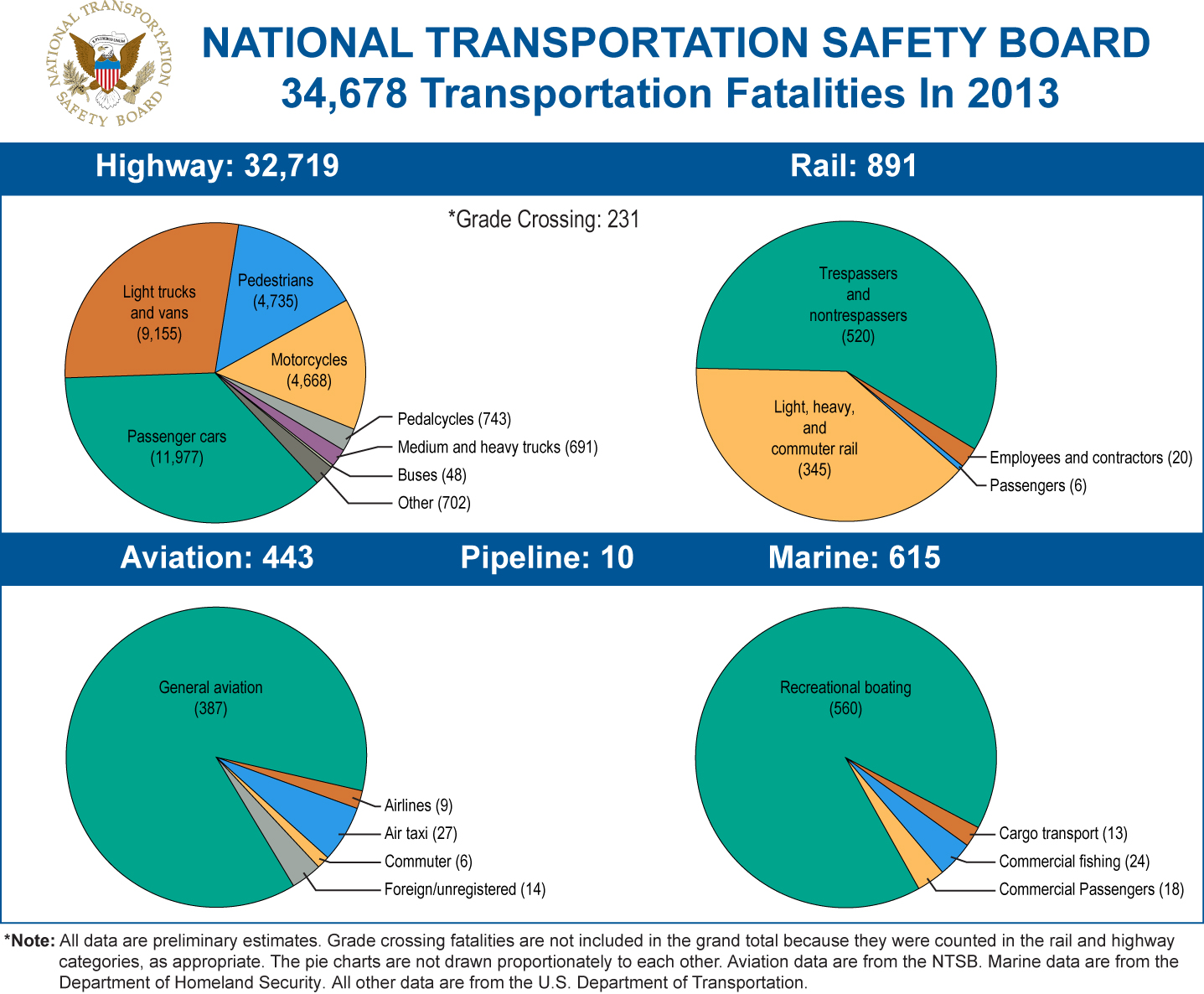A column in The Week argues that notwithstanding Tuesday's horrific crash of a Metro-North train that killed five passengers, rail is a much safer mode than driving. However, rail deaths are increasing.
"It's true that there are lessons to be drawn from the crash [see below NTSB pie charts] — but not ones that imply we should avoid using passenger trains," writes Jacob Anbinder," a policy associate at The Century Foundation, a New York-based think tank. "If anything, the Valhalla incident shows just how far we've come on train safety, and also what we must do to keep improving."
While all signs point to error by the motorist as the cause, the crash has already prompted more hand-wringing about the safety practices of the Metro-North, which were criticized by the Federal Railroad Administration last year.
Amid the hundreds of news reports and searing images of the train's burnt-out carcass, it's easy to forget just how ridiculously safe it is to travel by rail in this country.
Anbinder reminds us that "(o)ver the last 15 years, just 55 [train] passengers were killed compared to the 60 or so automobile drivers and passengers who die in car crashes every day."
Counting "death by train" can be tricky. According to Progressive Railroading:
Railroad deaths increased 6 percent from 840 in 2012 to 891 in 2013, the vast majority of which were trespassers struck by trains, they said. Trespasser and non-trespasser fatalities totaled 520, while commuter-, heavy- and light-rail fatalities totaled 345. Employee and contractor deaths numbered 20, and passenger deaths totaled six.
A press release from the National Transportation Safety Board (NTSB) issued the day before the Valhalla crash is titled: "Slight Drop in 2013 Transportation Fatalities in Most Categories; Rail Deaths Rise."
- Railroad deaths increased 6 percent from 840 to 891. The vast majority of these fatalities continue to be trespassers struck by trains.
- U. S. roadway deaths, which account for nearly 94 percent of all transportation deaths, decreased from 33,782 in 2012 to 32,719 in 2013.

Credit: NTSB
NTSB inspectors at the Valhalla crash site are attempting to determine why "the electrified third rail dislodged from the tracks and entered the lead car," according to CBSNewYork.
Metro-North is the only rail line in the country to use "a bottom-contact third rail," as opposed to a top-contact third rail, they write. "The nose piece slopes down to catch the 'shoe' that touches the rail for power," the implication being that the impact caused the shoes to lift the rail and penetrate the first car.
Hat tip to Angie Schmitt of Streetsblog.
FULL STORY: Why the Metro-North crash should encourage more people to take the train

Analysis: Cybertruck Fatality Rate Far Exceeds That of Ford Pinto
The Tesla Cybertruck was recalled seven times last year.

National Parks Layoffs Will Cause Communities to Lose Billions
Thousands of essential park workers were laid off this week, just before the busy spring break season.

Retro-silient?: America’s First “Eco-burb,” The Woodlands Turns 50
A master-planned community north of Houston offers lessons on green infrastructure and resilient design, but falls short of its founder’s lofty affordability and walkability goals.

Test News Post 1
This is a summary

Analysis: Cybertruck Fatality Rate Far Exceeds That of Ford Pinto
The Tesla Cybertruck was recalled seven times last year.

Test News Headline 46
Test for the image on the front page.
Urban Design for Planners 1: Software Tools
This six-course series explores essential urban design concepts using open source software and equips planners with the tools they need to participate fully in the urban design process.
Planning for Universal Design
Learn the tools for implementing Universal Design in planning regulations.
EMC Planning Group, Inc.
Planetizen
Planetizen
Mpact (formerly Rail~Volution)
Great Falls Development Authority, Inc.
HUDs Office of Policy Development and Research
NYU Wagner Graduate School of Public Service

























